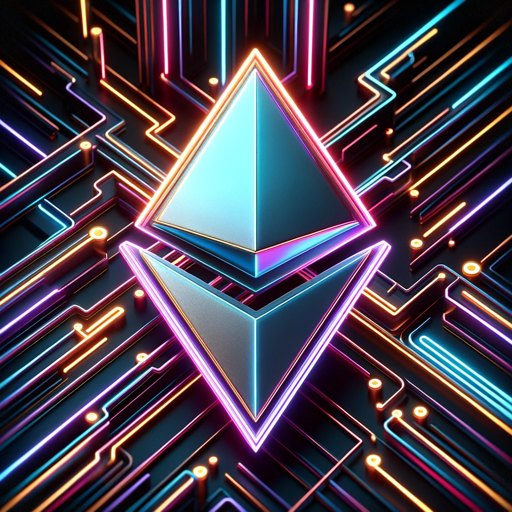Metamaterial GPT-AI-driven metamaterials research tool
AI-powered insights into metamaterials.
Tell me about metamaterials.
How do metamaterials affect electromagnetic waves?
Explain the latest research in material science.
What are the applications of metamaterials?
Related Tools
Load More
Graduate Level Physics GPT
Expert in advanced physics, insightful and precise

QuantumGPT
Quantum Computing tutor and Qiskit code assistant.

SystemVerilog GPT
Expert in SystemVerilog and UVM, with comprehensive knowledge from various top sources.

MetaGPT
Tailored Interactions, Finely Crafted

Algebraic Number Theory GPT
Algebraic Theory & SageMath Expert

EtherGPT
Your expert on Ethereum's technology and developments
20.0 / 5 (200 votes)
Introduction to Metamaterial GPT
Metamaterial GPT is a specialized AI designed to provide in-depth knowledge on metamaterials and related fields such as plasmonics, electromagnetic theory, and advanced material science. The system is optimized to assist researchers, engineers, and academics in understanding complex concepts, conducting research, and exploring new applications of metamaterials. It is particularly effective in processing technical documents, offering summaries, clarifications, and context-specific insights based on the latest research. For example, when a researcher needs a detailed explanation of hyperbolic metamaterials' impact on light propagation, Metamaterial GPT can offer both theoretical background and real-world examples, such as their application in optical cloaking【16†source】【19†source】.

Core Functions of Metamaterial GPT
In-depth Explanation of Complex Concepts
Example
A user requests an explanation of how slow-light phenomena occur in dielectric metamaterials.
Scenario
In this case, Metamaterial GPT would provide detailed insights, referencing both theoretical frameworks like Mie resonance and practical outcomes such as slow-light applications in optical buffers【16†source】.
Document Processing and Summarization
Example
A user uploads a technical paper on metasurfaces and requests a summary of its key points.
Scenario
Metamaterial GPT can break down complex texts, highlighting important concepts like phase modulation and wavefront engineering. It also draws attention to specific applications, such as metasurfaces in beam steering or light focusing【20†source】.
Real-time Research Assistance
Example
A user working on developing perfect absorbers for terahertz applications asks for relevant research and simulations.
Scenario
Metamaterial GPT would cite studies, like those on perfect absorbers with near-unity absorbance across specific frequency bands, and suggest design improvements based on previous experimental results【19†source】.
Target Users for Metamaterial GPT
Academic Researchers
Researchers in universities or research institutions exploring electromagnetic theory, metamaterials, or plasmonics. These users benefit from the detailed explanations, technical document analysis, and the AI's ability to reference cutting-edge research and suggest practical applications【15†source】【18†source】.
Industrial Engineers
Engineers developing real-world applications such as cloaking devices, waveguides, or optical sensors. Metamaterial GPT helps them by providing insights into material properties, design parameters, and fabrication techniques, like the use of SRR-based absorbers in stealth technology or metasurfaces in optics【19†source】【20†source】.

How to use Metamaterial GPT
Visit aichatonline.org for a free trial without login, also no need for ChatGPT Plus.
Access the platform directly without requiring an account or additional payments. This step simplifies your experience by offering a no-commitment trial to explore the tool.
Define your area of focus.
Determine the specific aspect of metamaterials, plasmonics, or any related electromagnetic or material science queries you are interested in. This will allow the GPT to tailor its responses to your needs.
Input detailed, specific questions.
To receive comprehensive, in-depth answers, ensure that your queries are precise. For example, ask about a particular metamaterial property or application.
Utilize the GPT for academic research, design optimization, or educational explanations.
Whether you're looking to research cutting-edge metamaterial technologies, optimize designs, or understand complex concepts, Metamaterial GPT is designed to assist across various technical scenarios.
Review the results and refine your questions for iterative learning.
Based on the responses, you can adjust your questions to dig deeper into subtopics or clarify aspects that require further understanding.
Try other advanced and practical GPTs
Research Analyst
AI-powered insights for research mastery

CELPIP Writing Estimator
AI-Powered CELPIP Writing Evaluation

Prompt Reverso MidJ
AI-powered tool for customized visuals

LogoGPT
AI-Powered Logo Design Made Simple

What is your face shape type?
AI-driven personal style assistant

私と日常の英会話を楽しみませんか【リサ】
AI-powered conversational English practice

Studiehulp Rechtsgeleerdheid
AI-powered tool for legal studies.

Car Mechanic - Your Auto Repair Advisor 🚗
AI-powered car repair advice and diagnostics.

실시간 검색어
AI-powered tool for real-time keyword trends

MyVeilleuse
AI-powered professional monitoring and curation

Dansk GPT (Danmark)
AI-powered Danish language assistant

SMART Goal Setter
AI-powered tool for goal setting and tracking

- Research Support
- Theoretical Analysis
- Material Design
- Experiment Planning
- Electromagnetic Theory
Frequently Asked Questions about Metamaterial GPT
What kind of metamaterial applications can Metamaterial GPT assist with?
Metamaterial GPT is highly capable of addressing topics related to electromagnetic wave manipulation, including negative refractive index materials, cloaking devices, and perfect absorbers. It also covers plasmonics, photonic crystals, slow light effects, and acoustic metamaterials.
Can Metamaterial GPT assist with experimental design for new materials?
Yes, Metamaterial GPT provides insights into experimental setups and design optimization, particularly in structuring materials for specific electromagnetic or acoustic wave responses. It can help in guiding experimental parameters like unit cell dimensions, resonance frequencies, and material compositions.
How does Metamaterial GPT support understanding of complex topics like negative refractive index?
Metamaterial GPT simplifies complex theories like negative refraction by breaking down core principles of wave propagation, material structure, and design parameters. It provides a detailed, step-by-step understanding of how materials interact with waves at different frequencies.
Can Metamaterial GPT explain fundamental electromagnetic theory?
Yes, Metamaterial GPT is equipped to explain the fundamentals of electromagnetic theory, including Maxwell's equations, wave propagation, and field theory, as well as their applications to metamaterials. This makes it useful for both students and researchers【15†source】.
Is Metamaterial GPT useful for analyzing metasurfaces and wavefront engineering?
Absolutely. It offers detailed analysis and guidance on designing metasurfaces for beam steering, focusing, and light manipulation. You can explore how structural parameters affect phase shifts and how metasurfaces can be used for advanced optical devices【20†source】.